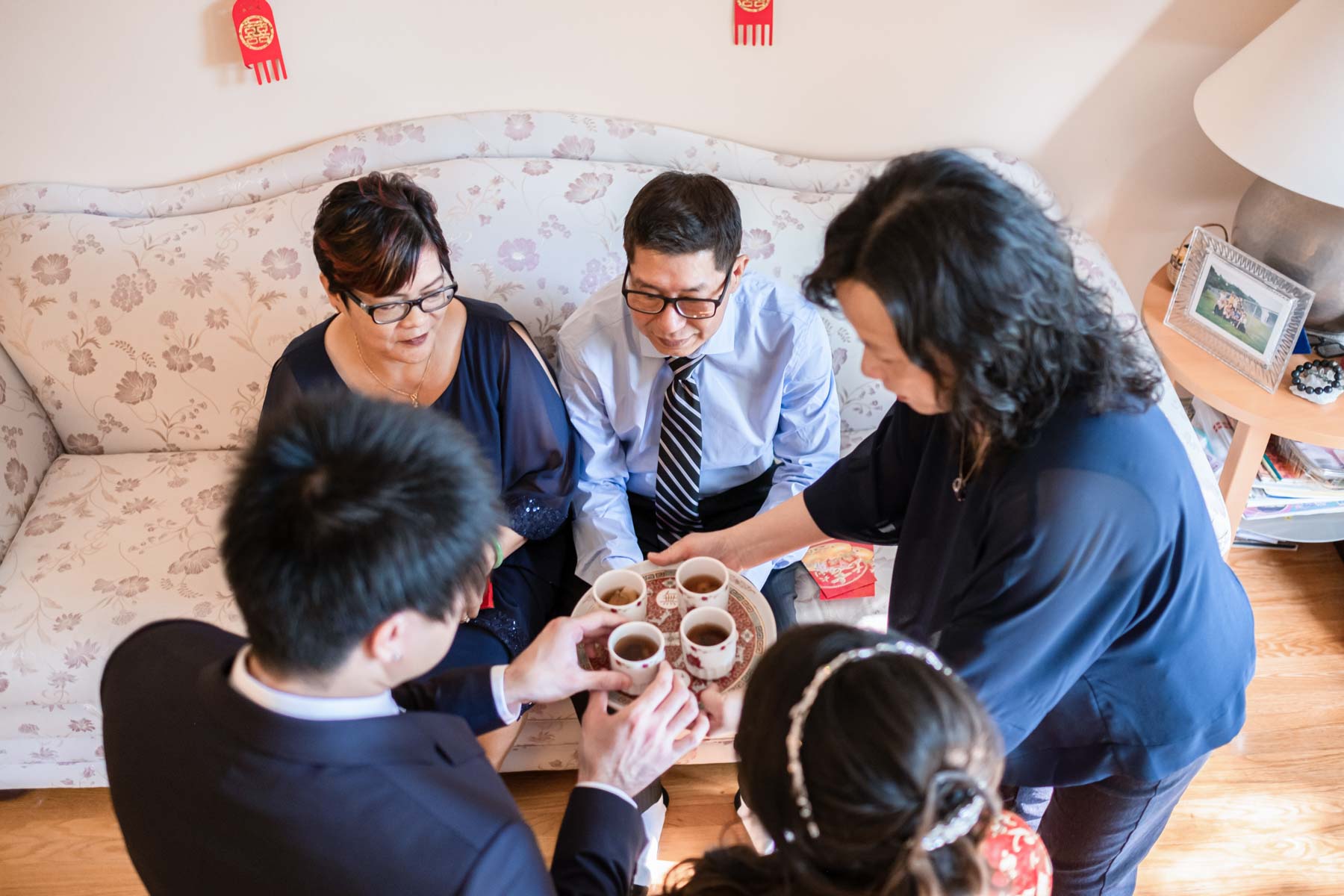
We had the pleasure of shooting numerous Traditional Chinese Tea ceremonies over the years and it is one of our specialties in Wedding shoots.
For those of you unfamiliar, let us walk you through a typical Chinese tea ceremony that remains a staple in many modern Chinese weddings.
If you are planning to incorporate a tea ceremony into your wedding day, know that we get it! We are beyond excited to ensure all aspects of your special day are photographed with utmost care, including this intimate tea ceremony.
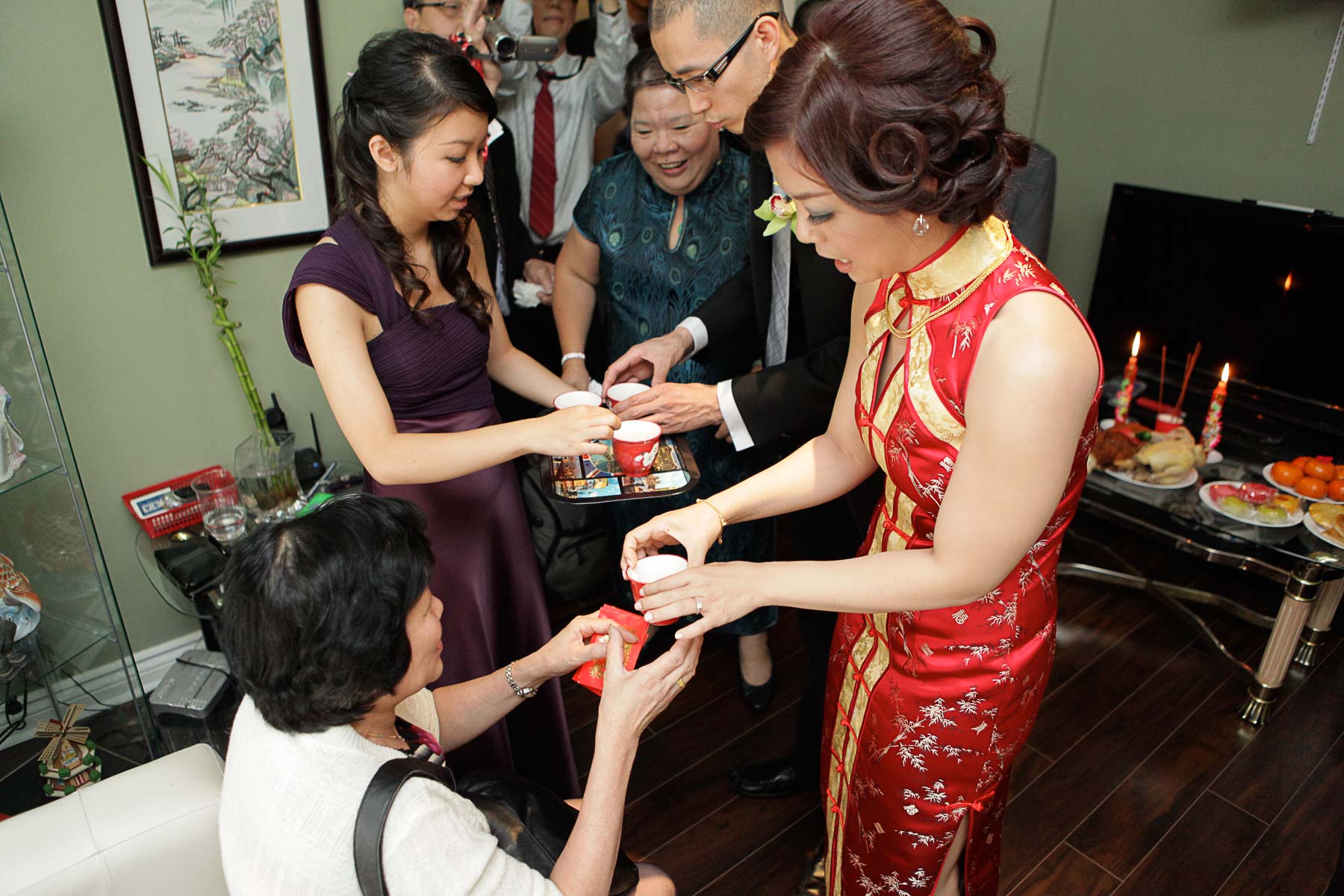
As we reflect on our tea ceremony, we wish we would have held the tea ceremony for both the bride and groom side in the same location and time. Either in a bouquet hall or a nice hotel room with ample lighting and space. This way everyone can enjoy the ceremonies. It just gives it a certainly warmth and brings togetherness the two families in this special occasion and allows the families to get quickly acquainted. (Here is our Chinese Tea Ceremony from many years ago ^_^ )
WHAT
We know this traditional tea ceremony in Chinese weddings is hugely important, as newlyweds pay respect and gratitude to parents, new in-laws, and other elders in their families by serving them tea. In turn, the couple is welcomed into the family on each
side and receive a ‘blessing’ for the marriage, gifting them gold jewellery, “hong bao” or “lai see” (red envelopes with money).
Further significance of tea through symbolism provides beautiful context to the tea ceremony at a Chinese wedding:
– Purity: Noble love. The brewed tea is pure.
– Stability: Faithful, unwavering love. Tea trees may not do well when transplanted; they thrive in stable environments.
– Fertility: Many children. Tea plants produce seeds in abundance.
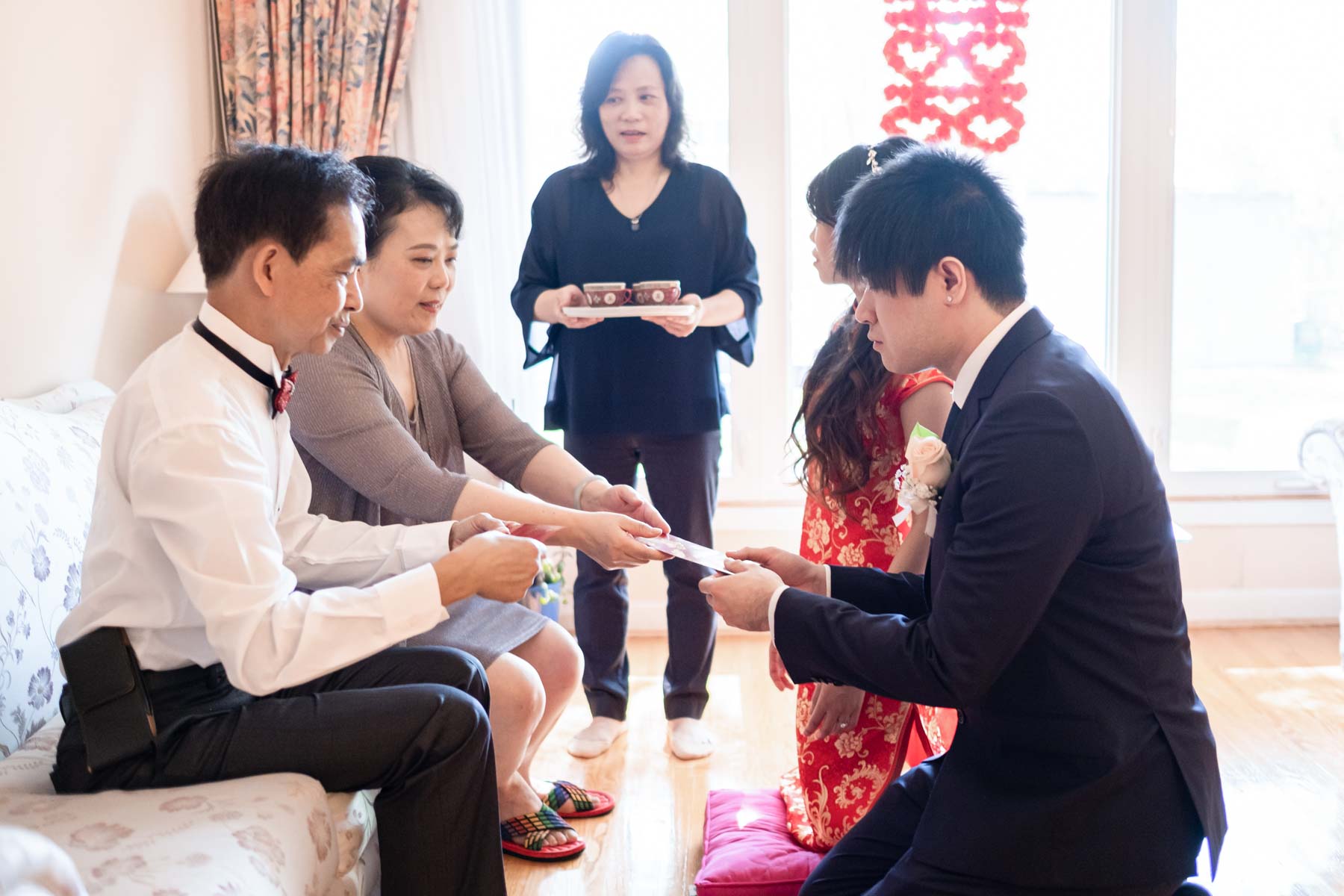
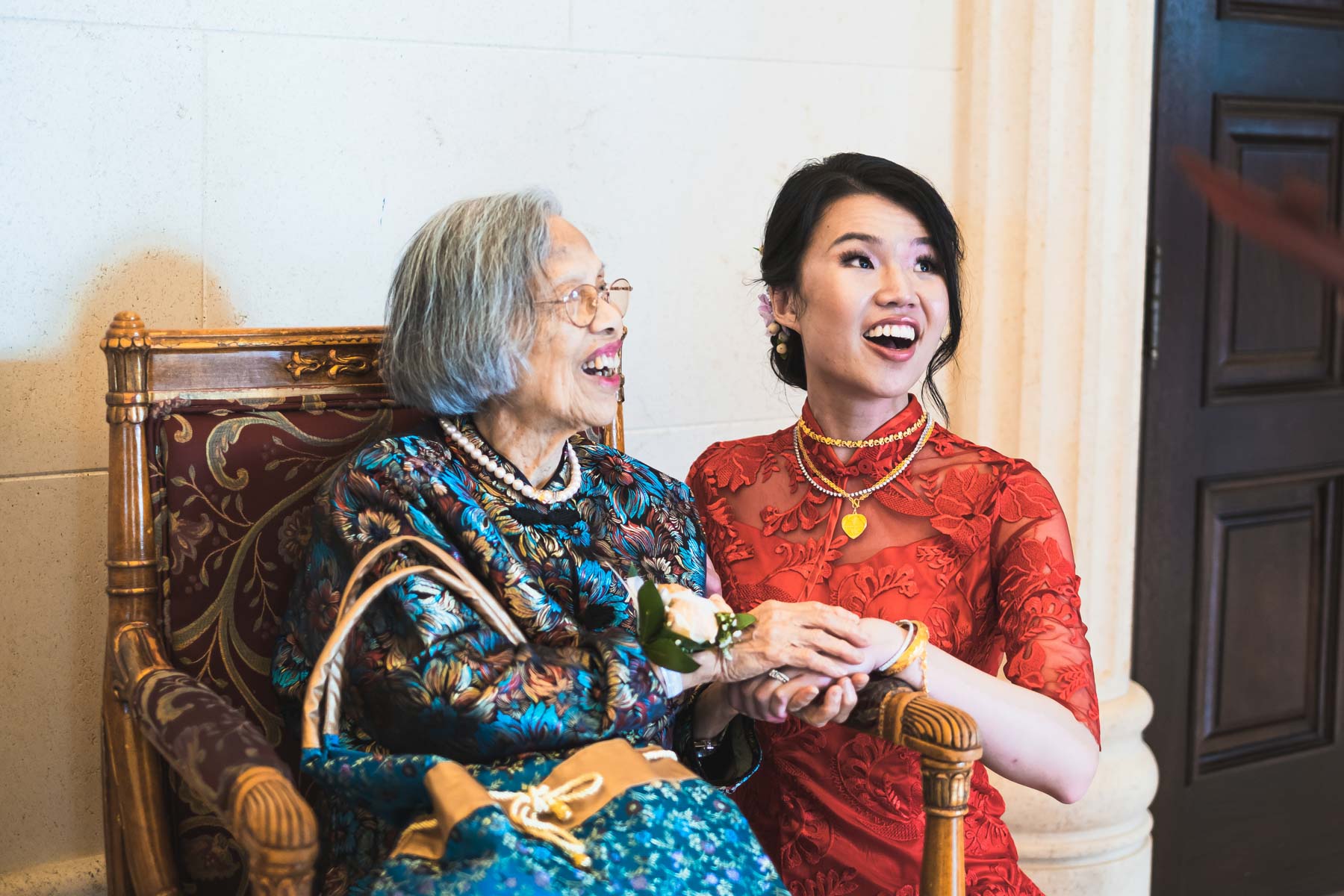
WHERE
The tea ceremony takes place inside the homes of the bride and groom. Each side of the family will take part in a separate ceremony, usually first at the groom’s house and then over at the bride’s house. As we have suggested above, sometimes the Tea ceremony takes place with both families present at the same location, often the wedding ceremony venue.
Lemons and Ants anticipates the commute between homes, if that is the preferred option.
WHO
The number of people involved depends on the size of the two families. Often the wedding party is also present to help with prep, brewing, pouring, and clean up. Younger siblings or cousins may also help during the ceremony.
It is typical for the bride and groom to serve the tea themselves to their elders.
However, the couple may opt to choose a female elder from the bride’s side to guide this important ceremony. In this case, they’ll look to an elder with a great marriage, someone who they respect and hold in great esteem as they’ll bring good luck to the couple. While the chosen elder pours the tea, she’ll speak blessings over the newlyweds for good health, fertility, wealth, success, and a long-lasting marriage.
Tea is typically served to parents first, then great grand parents, grandparents, aunts and uncles, siblings and cousins, in order of seniority.
We understand the flow, ins-and-outs, and order of events for the tea ceremony, and will intuitively and seamlessly capture each interaction during this treasured occasion.
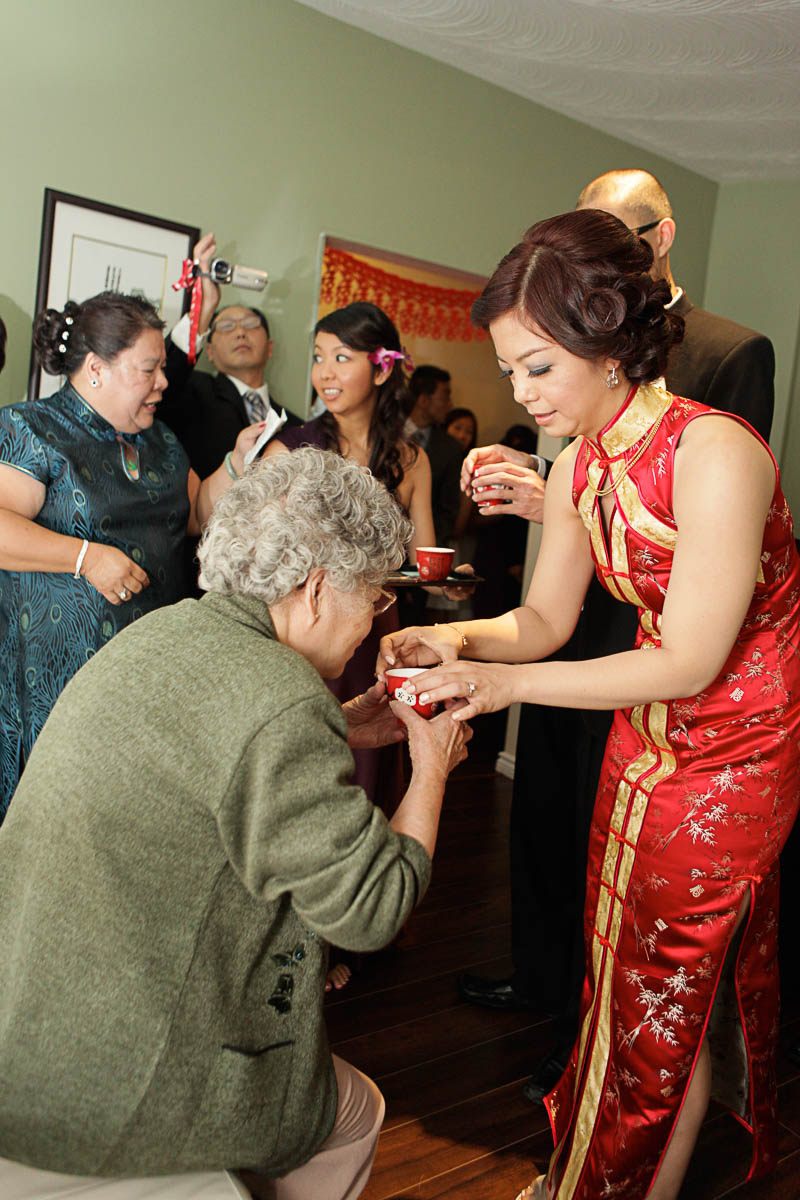
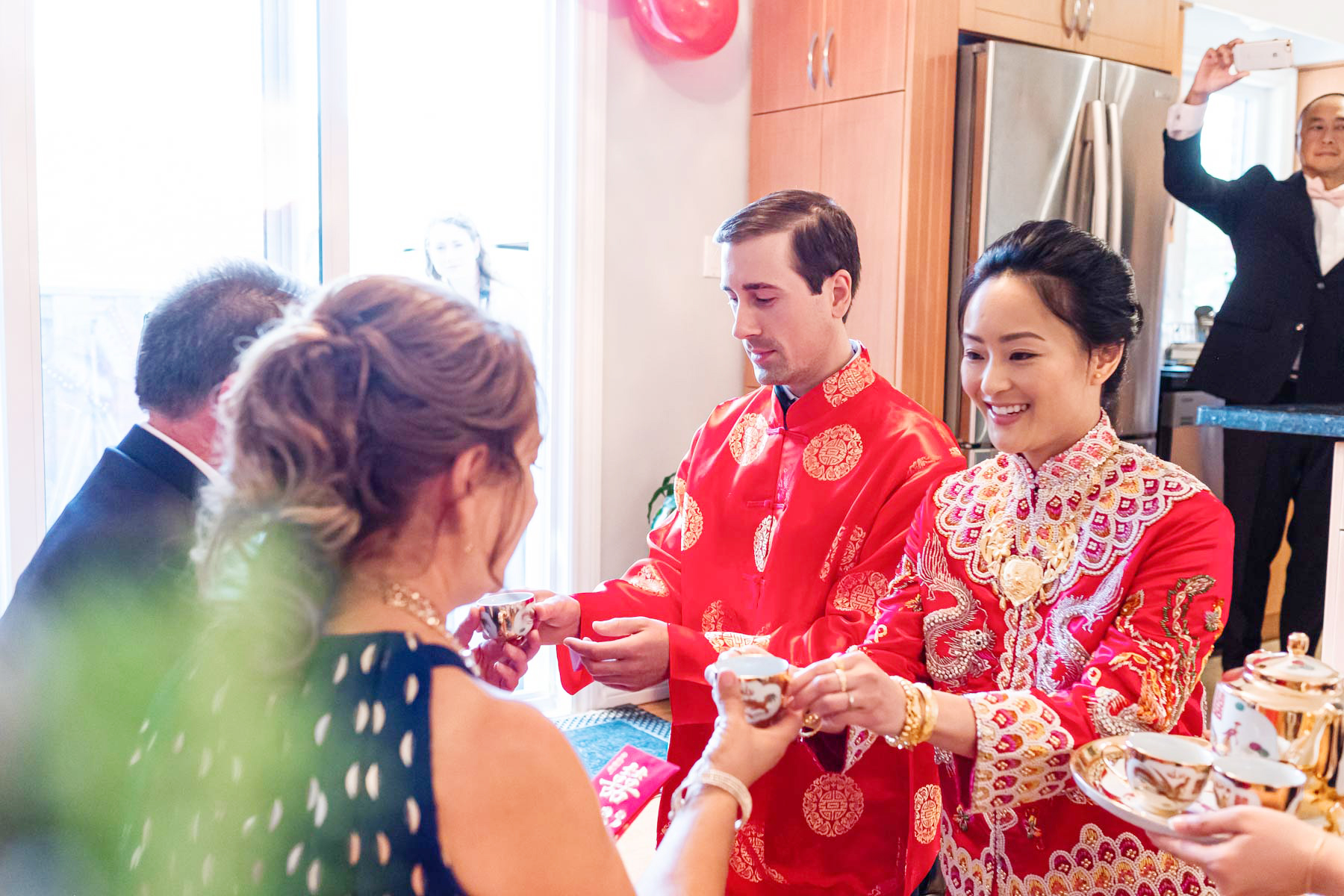
WHY
Within the broader context of the modern wedding, the tea ceremony feels like a private ceremony with close family and friends before (or after) the larger ceremony and reception. It’s an intimate gathering with those you love and an opportunity to
honor heritage and show respect and gratitude before you begin your married life together.
It is the most important part of a traditional Chinese wedding, so is the perfect element to incorporate into your day in 2023.
In our photography approach, we understand the symbolic nature of this ceremony as the union of two families. With this in mind, we ensure the collection of images from this moment are meaningful and capture the essence of welcoming the bride and groom into each others’ families, respect for elders, and gratitude to parents.
You’ll be in good hands.
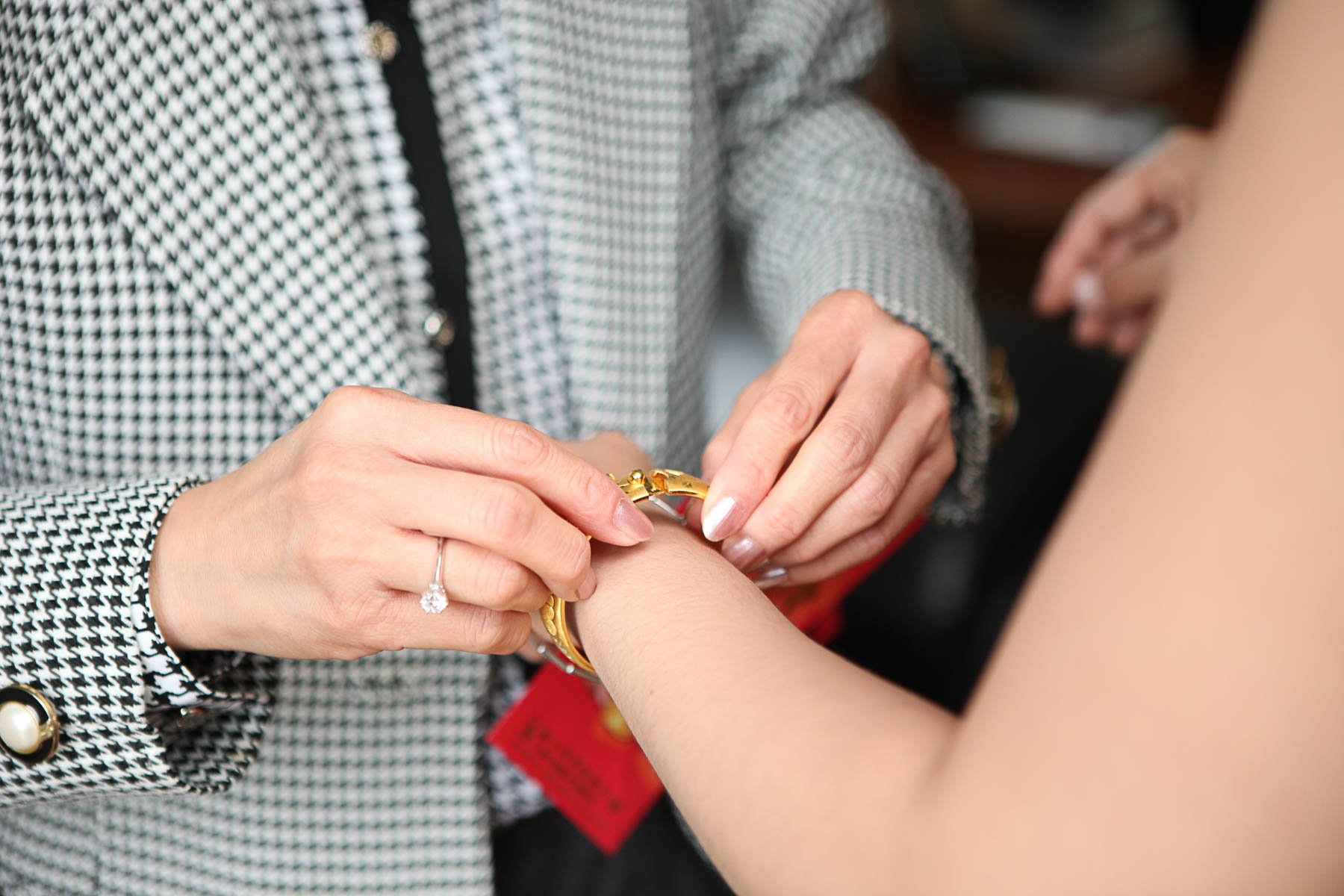
HOW
The length of the tea ceremony again depends on the size of the group. It usually takes about 25 minutes or so. The couple will take turns serving relatives a cup of tea, in the order of their seniority in the family. After each family member is served tea, they will gift the newlyweds with the red money-filled envelope or with jewellery. It is customary (and expected) for the couple to wear the jewellery immediately as a sign of appreciation.
The type of tea is particular to the couple. There is no right or wrong choice; it is very personal. Because the the ceremony is about honouring elders and relatives, it wouldn’t hurt to ask around to find out what some of the favourite teas are and go from there 🙂
Once you nail down a tea, go out and get the best grade you can find. It won’t cost a fortune because it’s a small amount.
It might look like this:
[optional: female elder pours tea, speaks blessings]
Newlyweds serve tea to parents
Parents drink tea
Parents give gifts
[optional: female elder pours tea, speaks blessings]
Newlyweds serve tea to great grandparents
Great grandparents drink tea
Great grandparents give gifts
[optional: female elder pours tea, speaks blessings]
Newlyweds serve tea to great uncle and aunt
Great uncle and aunt drink tea
Great uncle and aunt give gifts Etc.
TIP : Two hands holding the saucer (not the tea cup) is recommended to avoid burns from the hot tea.
Looking into the details of tea ceremony crockery, decorations, and etiquette is a great idea, and doing a short practice run (role-play) with your partner a few days/weeks in advance will ease any anxieties.
It’s customary for the bride to wear red, the color of happiness, good fortune, prosperity, and success. Make sure you chose your ideal red gown a few months in advance in case alterations need to take place.